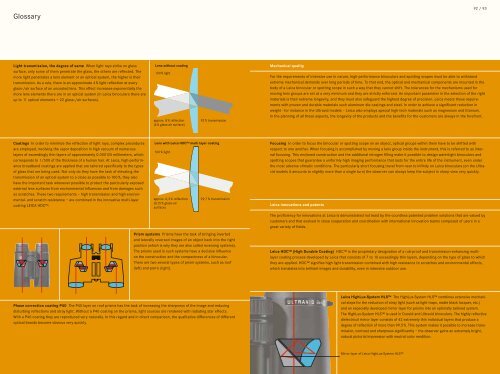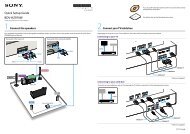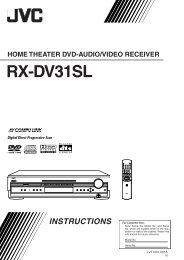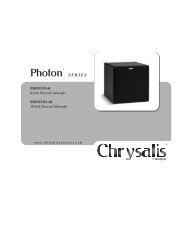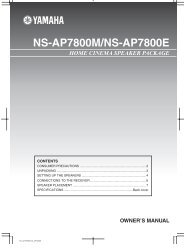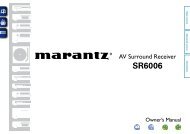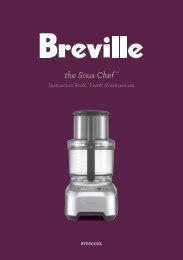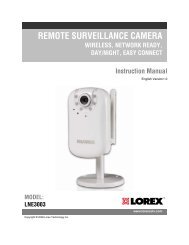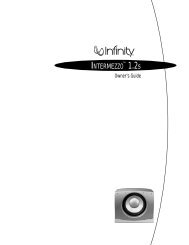Leica Sport Optics - One Call
Leica Sport Optics - One Call
Leica Sport Optics - One Call
Create successful ePaper yourself
Turn your PDF publications into a flip-book with our unique Google optimized e-Paper software.
Glossary<br />
Light transmission, the degree of same When light rays strike on glass<br />
surface, only some of them penetrate the glass, the others are reflected. The<br />
more light penetrates a lens element or an optical system, the higher is their<br />
transmission. As a rule, there is an approximate 4 % light reflection at every<br />
glass-/air surface of an uncoated lens. This effect increases exponentially the<br />
more lens elements there are in an optical system (in <strong>Leica</strong> binoculars there are<br />
up to 11 optical elements = 22 glass-/air surfaces).<br />
Coatings In order to minimize the reflection of light rays, complex procedures<br />
are employed, involving the vapor deposition in high vacuum of numerous<br />
layers of exceedingly thin layers of approximately 0.000125 millimeters, which<br />
corresponds to 1/500 of the thickness of a human hair. At <strong>Leica</strong>, high-performance<br />
broadband coatings are applied that are tailored specifically to the types<br />
of glass that are being used. Not only do they have the task of elevating the<br />
transmission of an optical system to a close as possible to 100 %, they also<br />
have the important task whenever possible to protect the particularly exposed<br />
external lens surfaces from environmental influences and from damages such<br />
as scratches. These two requirements – high transmission and high environmental-<br />
and scratch resistance – are combined in the innovative multi-layer<br />
coating LEICA HDC.<br />
Lens without coating<br />
100 % light<br />
approx. 8 % reflection<br />
(4 % glass-air surface)<br />
Lens with <strong>Leica</strong> HDC multi layer coating<br />
100 % light<br />
approx. 0,3 % reflection<br />
(0,15 % glass-air<br />
surface)<br />
92 % transmission<br />
99,7 % transmission<br />
Prism systems Prisms have the task of bringing inverted<br />
and laterally reversed images of an object back into the right<br />
position (which is why they are also called reversing systems).<br />
The prisms used in such systems have a decisive influence<br />
on the construction and the compactness of a binocular.<br />
There are two several types of prism systems, such as roof<br />
(left) and porro (right).<br />
Phase correction coating P40 The P40 layer on roof prisms has the task of increasing the sharpness of the image and reducing<br />
disturbing reflections and stray light. Without a P40 coating on the prisms, light sources are rendered with radiating star effects.<br />
With a P40 coating they are reproduced very naturally. In this regard and in direct comparison, the qualitative differences of different<br />
optical brands become obvious very quickly.<br />
Mechanical quality<br />
92 / 93<br />
For the requirements of intensive use in nature, high-performance binoculars and spotting scopes must be able to withstand<br />
extreme mechanical demands over long periods of time. To that end, the optical and mechanical components are mounted in the<br />
body of a <strong>Leica</strong> binocular or spotting scope in such a way that they cannot shift. The tolerances for the mechanisms used for<br />
moving lens groups are set at a very minimum and they are strictly enforced. An important parameter in the selection of the right<br />
materials is their extreme longevity, and they must also safeguard the highest degree of precision. <strong>Leica</strong> meets these requirements<br />
with proven and durable materials such aluminum die-castings and steel. In order to achieve a significant reduction in<br />
weight - for instance in the Ultravid models – <strong>Leica</strong> also employs special high-tech materials such as magnesium and titanium.<br />
In the planning of all these aspects, the longevity of the products and the benefits for the customers are always in the forefront.<br />
Focusing In order to focus the binocular or spotting scope on an object, optical groups within them have to be shifted with<br />
respect to one another. When focusing is accomplished by moving a lens group inside the instrument, this is referred to as internal<br />
focusing. This enclosed construction and the additional nitrogen filling make it possible to design watertight binoculars and<br />
spotting scopes that guarantee a uniformly high imaging performance that lasts for the entire life of the instrument, even under<br />
the most adverse climatic conditions. The particularly short focusing travel from near to infinity on <strong>Leica</strong> binoculars (on the Ultravid<br />
models it amounts to slightly more than a single turn) the observer can always keep the subject in sharp view very quickly.<br />
<strong>Leica</strong> innovations and patents<br />
The proficiency for innovations at <strong>Leica</strong> is demonstrated not least by the countless patented problem solutions that are valued by<br />
customers and that evolved in close cooperation and coordination with international innovation teams composed of users in a<br />
great variety of fields.<br />
<strong>Leica</strong> HDC (High Durable Coating) HDC is the proprietary designation of a rub-proof and transmission-enhancing multilayer<br />
coating process developed by <strong>Leica</strong> that consists of 7 to 10 exceedingly thin layers, depending on the type of glass to which<br />
they are applied. HDC signifies high light transmission combined with high resistance to scratches and environmental effects,<br />
which translates into brilliant images and durability, even in intensive outdoor use.<br />
<strong>Leica</strong> HighLux-System HLS The HighLux-System HLS combines extensive mechanical<br />
steps for the reduction of stray light (such as light traps, matte black lacquer, etc.)<br />
and an especially developed mirror layer for prisms into an optimally tailored system.<br />
The HighLux-System HLS is used in Duovid and Ultravid binoculars. The highly reflective<br />
dielectrical mirror layer consists of 42 extremely thin individual layers that produce a<br />
degree of reflection of more than 99.5 %. This system makes it possible to increase transmission,<br />
contrast and sharpness significantly – the observer gains an extremely bright,<br />
natural pictorial impression with neutral color rendition.<br />
Mirror layer of <strong>Leica</strong> HighLux-System HLS


